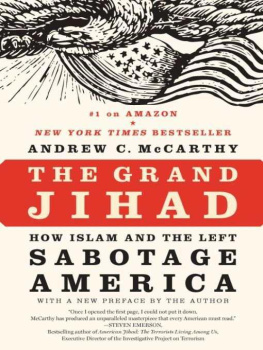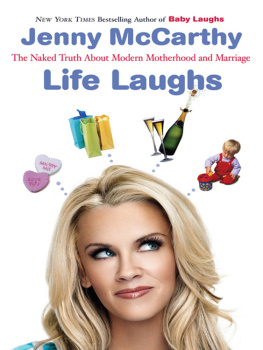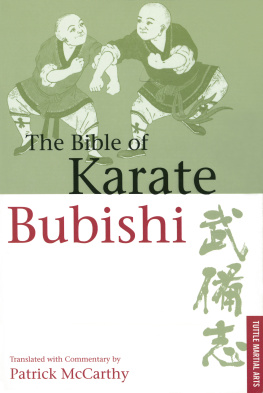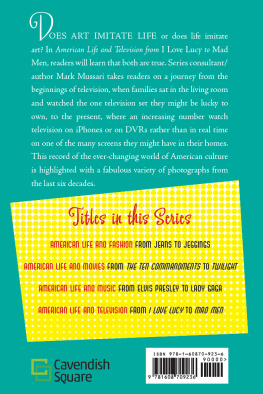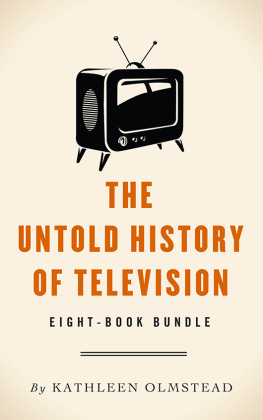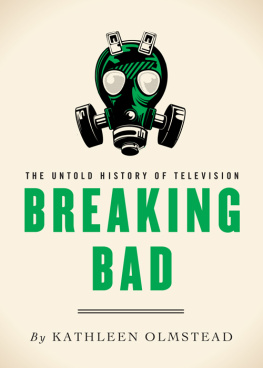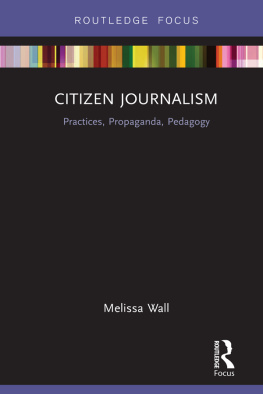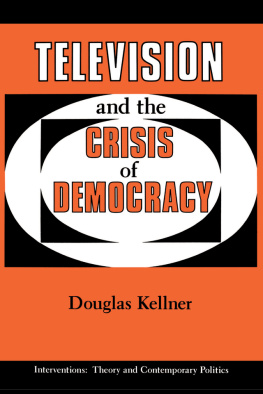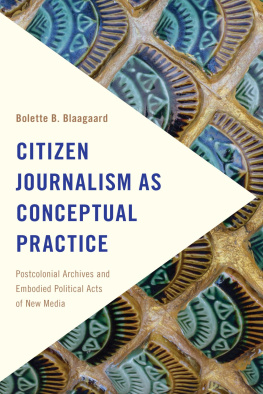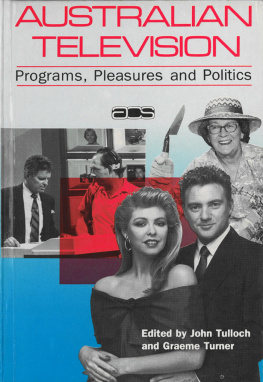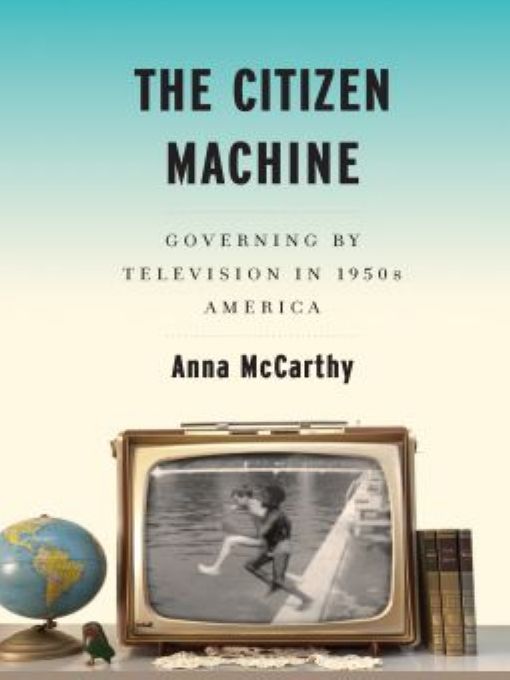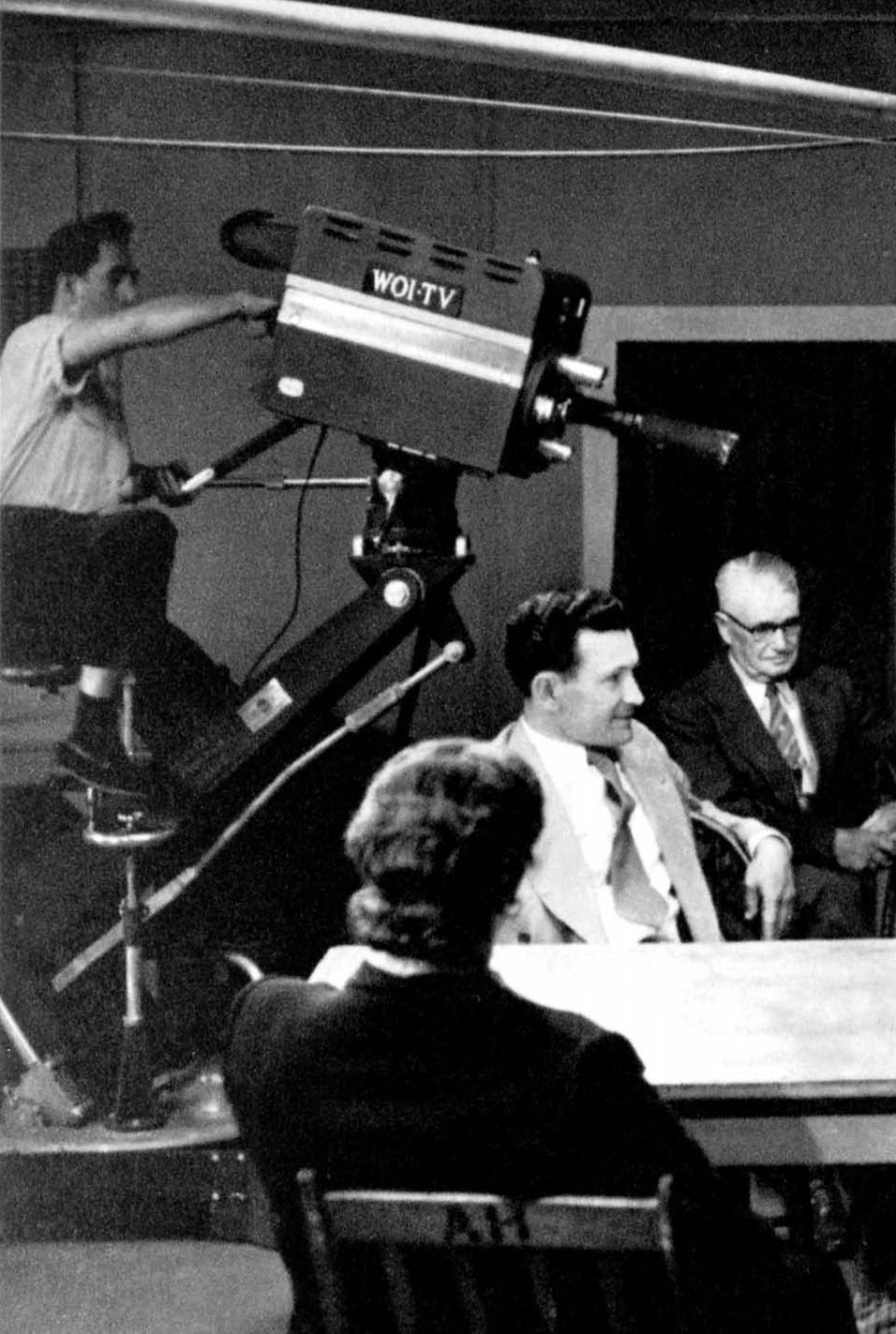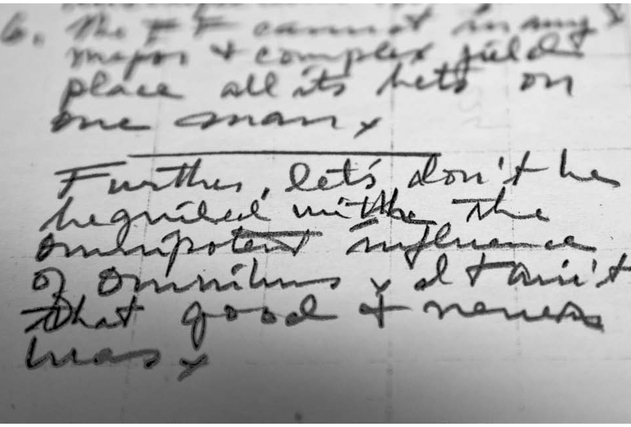Table of Contents
Also by
Anna McCarthy
AMBIENT TELEVISION
Visual Culture and Public Space (2001)
MEDIASPACE
Place, Scale, and Culture in a Media Age (2004)
For Bill
O Mediums! O to teach! To convey the invisible faith!
Walt Whitman, Apostroph
(Chants Democratic and Native American, 1860)
Acknowledgments
In writing this book, I benefited immeasurably from the research support of a number of institutions. The Scholar-in-Residence programs at the University of Pennsylvanias Annenberg School for Communication and the University of Colognes Center for Media and Cultural Communication provided me with time to write and present this work as it evolved, as did a faculty fellowship at NYUs International Center for Advanced Study and the Stephen Charney Vladeck Fellowship from NYUs Robert F. Wagner Graduate School of Public Service. I wish to thank the following individuals associated with these gigs for their feedback at critical stages in the project: Barbie Zelizer, Katherine Sender, Elihu Katz, Ilka Becker, Michael Cuntz, Friedrich Balke, Allen Hunter, Marilyn Young, Robert Vitalis, Sergei Kapterev, Alyosha Goldstein, and Nicole Sackley.
I am grateful also for commentary and critique from audiences at the University of Amsterdams Department of Film and Media Studies, the Film Studies Program at Yale University, the University of Torontos Center for the Study of the United States, the University of Montreals Useful Cinema Symposium, the Department of Film and Media Studies at the University of California at Irvine, the Department of Critical Studies in the University of Southern Californias School of Cinema-Television, the Rockefeller Archives, the Center for the Humanities at Wesleyan University, the Tamiment Library at NYU, the Columbia University Seminar in American Studies, the Columbia University Seminar in Film and Interdisciplinary Interpretation, the Visual Culture Colloquium at Bryn Mawr College, and the Department of Film and Media Studies at Swarthmore College. I wish to thank the following individuals for their comments on these occasions: John MacKay, Alondra Nelson, Charles Musser, Nicholas Sammond, Michael Cobb, Elspeth Brown, Vanessa Schwartz, Amelie Hastie, Jennifer Horne, Edward Dimendberg, Victoria Johnson, William Buxton, Joseph Reed, Jeanine Basinger, Jill Morawski, Stewart Ewen, Molly Nolan, Michael Nash, Amanda Claybaugh, William Luhr, Drake Stutesman, Christina Zwarg, Patricia White, Jane Caplan, and Homay King.
Many other readers and interlocutors have helped me refine the ideas in this book, both in conversation and in their generous readings of drafts over the years. I am indebted to Gustavus Stadler, Susan Murray, Dana Polan, William L. Bird, Steven Classen, Thomas Bender, James Schwoch, Elaine Freedgood, Toby Miller, S. Paul Klein, Nick Tanis, Mark Naison, Ellen M. Violett, Jos Muoz, Laura Kipnis, Aurora Wallace, and Tavia Nyongo. The argument of this book is particularly enriched by the exemplary work of Laurie Ouellette and Lisa Duggan, and I owe them particular thanks for the sustaining models they have established in their own publications.
Thanks must also go to the archivists who helped me navigate un-countable square feet of primary materials in film and manuscript collections: Marge McNinch and Roger Horowitz at the Hagley Museum and Library, which funded the research in Chapter Two with a grant-in-aid; Leith Johnson and Joan Miller at the Wesleyan Cinema Archives; Jonathan Greene at the Ford Foundation Archives; Lynda DeLoach at the George Meany Memorial Archives; Margaret Compton at the Peabody Awards Archives at the University of Georgia; as well as archivists at the State Historical Society of Wisconsin, the University of Illinois at Urbana-Champaign, the New York Public Librarys Schomberg Center for Research in Black Culture, and the Seeley Mudd Manuscripts Library at Princeton. I am especially grateful to J. Fred MacDonald of MacDonald and Associates and Rick Prelinger of the Prelinger Library for their help in locating audiovisual materials.
I am grateful to a number of individuals and institutions for granting permission to reprint film stills in this book: The Hagley Museum and Business Library; KETC-TY, St. Louis; Edward O. Bland; The Center for the Study of the Great Ideas; J. Fred MacDonald; The George Meany Memorial Archives.
For research assistance I thank the following current and former graduate student employees at NYU: Torey Liepa, Ragan Rhyne, Adam Segal, Anastasia Saverino, Alexander Kupfer, Michelle Kelley, Jose Freire, and Cortland Rankin. Juan Monroy was invaluable in the final stages of manuscript preparation when I broke my arm, and Stephanie Broad was a godsend when it came to photographing the illustrations. On the editorial end, I must particularly thank Andr Schiffrinfor his faith in the project, for his patience, and for his insightsand Marc Favreau, who wielded the scalpel of redaction with consummate skill.
Every page of this book bears witness to the love and support of Bill Vourvoulias, and, in dedicating it to him, so do I.
Introduction
TELEVISION AND POLITICAL CULTURE AFTER WORLD WAR II
TO GOVERN, Napoleon wrote in his will, is to spread morality, education, and happiness. A century and a half later, some powerful individuals in the United States decided that television was a perfect instrument for realizing such a vision. Inspired less by Napoleon than by the perceived threats of Soviet communism, class war, and racial violence, these members of what was then known as the Establishment were drawn together by a shared conviction that television broadcasting, although a debased and thoroughly commercial institution, could be a useful venue for governing. Not governing through the repression of peoples wills, not governing as dominance from above by an all-powerful state, but rather governing as a process of cultivation that presumes individual liberty and seeks to preserve it through the ever-evolving medium of citizenshipa model of liberal rule described by Michel Foucault as an administration of things that would think above all else of mens freedom, of what they want to do, of what they have an interest in doing, of what they think about doing.
The TV shows produced and proposed in the service of such lofty goals were often quite crude. Some, it should be noted, seem laughable from the perspective of the present: an animated cartoon about free enterprise, a brownface drama about land reform in India, a sketch comedy about civil liberties. Their sponsors, technocrats to the core and propagandists by inclination, nevertheless were convinced that they could help maintain social stability and national cohesion by exploiting the airwaves for citizenship, for personality development, for general increase in enlightenment and taste, as one Ford Foundation staff member put it. How exactly, then, did TV come to be seen by some social and political elites as an appropriate vehicle for governing the habits, morals, and mental development of the populace? Why, for instance, would a man such as Robert Maynard Hutchinsthe legendarily irascible public intellectual who once described television as a fungusthink that TV programs could help educate Americans about civil liberties and civil rights?




